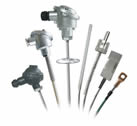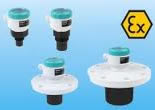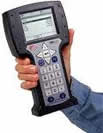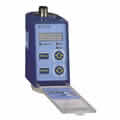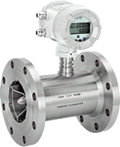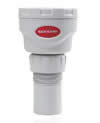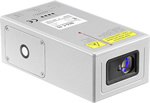Ambient hymidity meter
The amount of water vapor in the air is called humidity, and the air without water vapor is dry air. In practice, there is no air without water vapor in the atmosphere, even in the atmosphere on deserts there is an amount of air humidity. Evaporation, which is the cause of humidifying the air from the surface of the oceans, surface waters, transpiration, etc., causes moisture, clouds, and rain. The maximum water vapor in the atmosphere is 3-4%.
Water vapor in the atmosphere plays a major role in maintaining the Earth's atmosphere temperature and human and plant health because water vapor absorbs long-wavelength radiation waves. So if the amount of water vapor in the atmosphere is low, the temperature difference will be very large. Therefore, it is important to discuss the variables of humid air, including relative humidity.
Saturated humidity
If the maximum amount of water vapor enters the air at a constant temperature, it is said that the air at this temperature is saturated with water vapor and has saturated moisture: water vapor pressure or tension in this case is called saturated vapor pressure at that temperature.
Relative Humidity (RH)
By definition, relative humidity is the ratio of absolute humidity at t temperature to saturated humidity at the same temperature. In other words, the ratio of water vapor in a certain volume of air at temperature t to the maximum weight of water vapor that can be in the same volume at temperature t is called relative humidity.
Most hygrometers detect relative humidity in the air. Atmospheric
vapor pressure is a
mixture of gases, each with a partial pressure. The air pressure at any point is equal to the sum of the partial pressures exerted by each gas plus water vapor. The amount of water vapor in the air varies with place and time. Whenever the pressure above the surface of water (or land) becomes saturated at a certain time and at a certain temperature, the partial pressure of water vapor at that time and temperature is called the saturation pressure.
As the air gets warmer, more molecules evaporate until the space above the water surface (earth) becomes saturated. Therefore, the partial vapor pressure of water depends on the temperature, and as the temperature increases, the saturated vapor pressure also increases. The lower the temperature, the less water vapor is needed to reach the saturation stage.
Dew point
If the air temperature reaches a point where the assumed air is 100% saturated with water vapor (constant pressure), such a degree is called the dew point. For the initial measurement of the dew point, we take a container whose outer wall is completely polished and put a mixture of water and ice in it. Whenever on the outer wall of the container is in contact with the desired air. Gradually water vapor particles are found in the form of liquid (dew), we determine the temperature of water with a thermometer. This temperature is the degree of saturation or dew point.
Environmental hygrometers are formerly more analog and now digital. In digital models, they are usually accompanied by a temperature display and are called hygrometers. In analog modes, hygrometers are hand-held and measure relative humidity without displaying temperature.
- Popular products

German laser thermometer with external thermocouple K tool 1725

Level controller / roller blade switch for solids and powders, model 1872

Industrial Laser Thermometer Instrument 1727

12-channel temperature recorder thermocouple tool 1189


